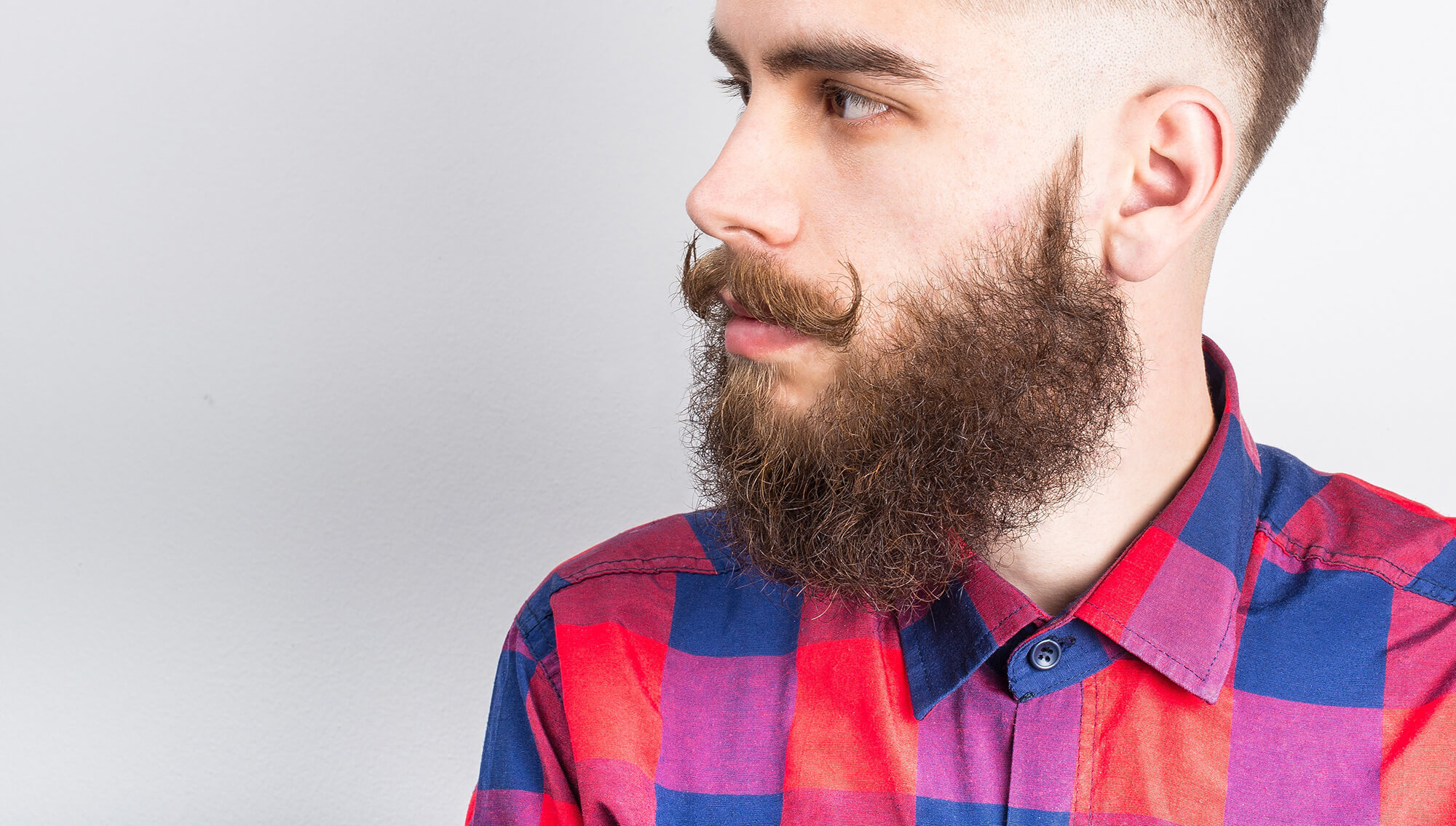Beard hair and pubic hair are both classified as androgenic hair, which means you can attribute their growth to androgens, such as testosterone and dihydrotestosterone (DHT).
Androgens stimulate the transformation of vellus hair – the light, fine body hair – into coarser, darker terminal hair during and after puberty.
Growth Patterns
You may observe that the growth patterns of beard and pubic hair are somewhat comparable.
They generally grow in response to hormonal changes during puberty and continue to develop in density and coverage throughout adolescence and adulthood.
These hairs also go through the same growth cycles, which include the anagen (growth phase), catagen (transitional phase), and telogen (resting phase).
Hair Follicle Similarities
A closer examination reveals hair follicle similarities between these two hair types.
Both beard and pubic hair follicles are compound in structure, with sebaceous glands that are responsible for producing natural oils. The hair structure from these follicles typically displays a curl or kink, distinguishing it from the straighter hair on your head.
Differences between Beard Hair and Pubic Hair
In understanding the differences between beard hair and pubic hair, you must consider aspects such as their location on the body, texture, length, and the timelines of their development.
Location and Function
- Location: Your beard hair grows predominantly on your face and neck, serving as a visual sign of maturity in men, while pubic hair develops in the genital region of both males and females, playing a role in protecting sensitive skin and potentially aiding in the dispersal of pheromones.
- Function: The function of beard hair is largely considered aesthetic and secondary sexual characteristic, whereas pubic hair provides a protective barrier, reducing friction during physical activities and possibly aiding in sexual attraction by trapping scents.
Hair Texture and Length
- Beard Hair: It tends to be coarser and longer, capable of being groomed and styled due to its length and the variety in texture across different individuals.
- Pubic Hair: The texture of your pubic hair is generally thicker and coarser due to hormonal influences, yet it is softer and finer, with a curlier, more delicate texture compared to facial hair.
Developmental Stages
- Onset: Beard hair begins to appear during puberty, usually between the ages of 12 and 16 for most males, and continues to develop into adulthood, whereas pubic hair also starts in puberty but completes its development more rapidly.
- Growth Rate: Beard hair growth can vary widely from person to person but generally grows faster than pubic hair and continues to grow over a longer time frame, reflecting the influence of androgen hormones such as testosterone.
Biological Perspective on Hair Classification
Your body has various types of hair, each classified by its character and the body part it grows on.
Terminal hair is the thick, long, and pigmented hair found on your scalp, face, armpits, and pubic region. This hair developed during puberty, indicating your body’s response to hormones.
Vellus hair, on the other hand, is fine, short, and lightly colored, covering most other parts of your body.
Interestingly, the distinction between beard hair and pubic hair can be elucidated with a comparative approach:
| Beard Hair | Pubic Hair |
|---|---|
| Terminal hair | Terminal hair |
| Stimulated by testosterone | Stimulated by androgens |
| Grows on face | Grows in pubic region |
Researchers have found that facial hair follicles, much like those in the pubic area, respond aggressively to testosterone, which stimulates their growth. Both types of hair strengthen and darken during puberty.
Biologically, the concept that beard hair could be classified similarly to pubic hair stems from these hormonal influences and developmental patterns.
The term “pubic hair” itself etymologically refers to any hair that appears during puberty (beard included), which historically equates it with the Middle English term for pubic hair, “neþir berd,” as described in an article on HuffPost.
Social and Cultural Interpretations
When you consider beard hair in the context of social and cultural norms, you’ll find that it often carries significant symbolism.
Historically, in many cultures, beards have been seen as a sign of masculinity and maturity, emerging with puberty and distinguishing men from boys and sometimes women.
It is not surprising that facial hair, including beards, has been linked to social status and dominance, as discussed in research on the protective potential of hair.
- Masculinity: In many societies, a full beard is often associated with strength and virility.
- Wisdom: Elderly men with beards have traditionally been seen as wise and respectful figures.
- Fashion: Trends in beard grooming reflect changing aesthetics and social preferences for facial hair.
As opposed to these symbolic significances, facial hair’s biological similarity to pubic hair—due to follicle composition and the timing of growth during puberty—has been noted by experts, yet this biological fact typically does not affect the social interpretations attributed to beards.
Moreover, the perception of beards has evolved; the clean-shaven look was a trend signifying professionalism and neatness at certain times, whereas a resurgence of beards has become more prominent, embraced as part of a cultural identity or personal style.
Your understanding of your facial hair can be a reflection of these potent cultural narratives, affecting how you perceive yourself and how others view you within the societal framework.

